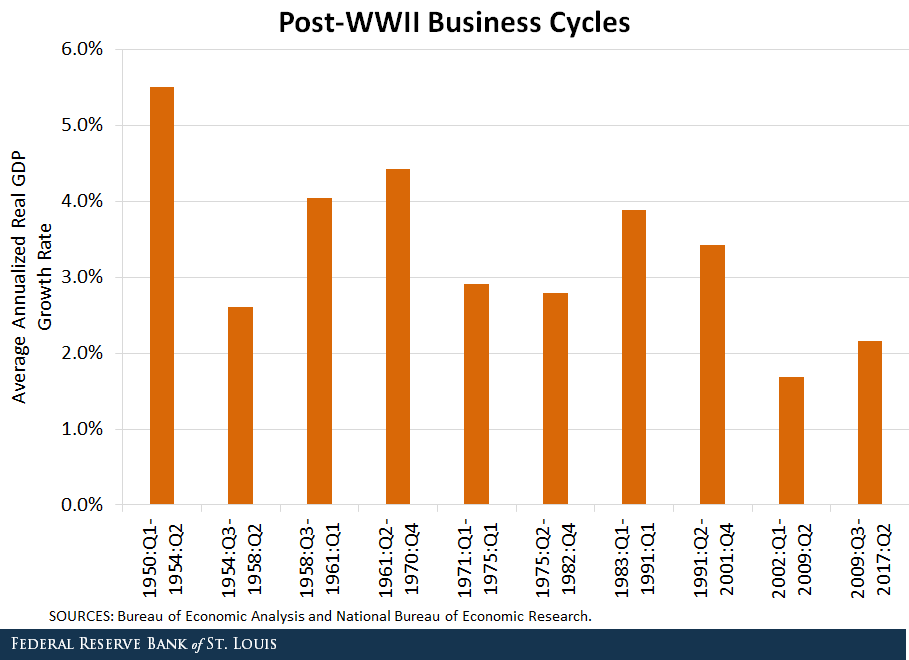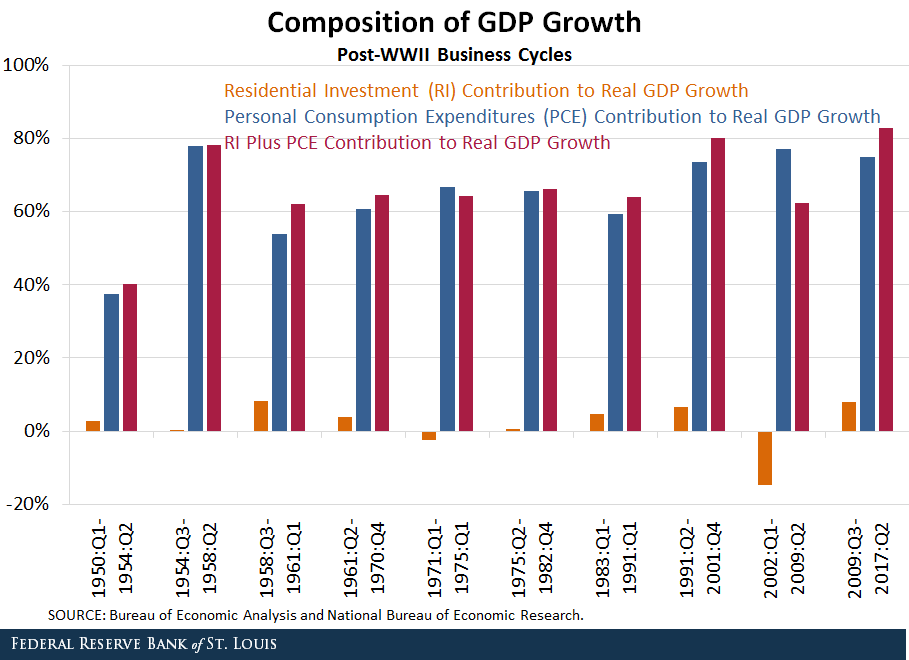From The St. Louis Fed On The Economy Blog.
Household-related spending is driving the economy like never before, according to a recent Housing Market Perspectives analysis.
Since the U.S. economy began to recover in 2009, close to 83 percent of total growth has been fueled by household spending, said William R. Emmons, lead economist with the St. Louis Fed’s Center for Household Financial Stability.
“Hence, the continuation of the current expansion may depend largely on the strength of U.S. households,” noted Emmons.
An Examination of the Current Expansion
In July, the U.S. economic expansion entered its ninth year, and it should soon become the third-longest growth period since WWII, Emmons said. He noted that it would become the longest post-WWII recovery if it persists through the second quarter of 2020.
However, the current expansion has been weak and ranks ninth among the 10 post-WWII business cycles, as shown in the figure below.1 “Only the previous cycle, ending in the second quarter of 2009, was weaker,” he said. “That cycle was dominated by the housing boom and bust and culminated in the Great Recession.”
The Changing Composition of Economic Growth
Emmons noted that the composition of economic growth also has changed in recent decades and has generally shifted in favor of housing and consumer spending,2 as shown in the figure below.
“Only during the brief 1958-61 cycle did residential investment—which includes both the construction of new housing units and the renovation of existing units—contribute proportionally more to the economy’s growth than it has during the current cycle,” Emmons said.
He noted that, perhaps surprisingly, homebuilding subtracted significantly from economic growth during the previous cycle even though it included the housing bubble. “The crash in residential investment was so severe between the fourth quarter of 2005 and the second quarter of 2009 that it erased all of housing investment’s previous growth contributions,” he said.
He noted that residential investment typically subtracts from growth during recessions. Thus, its ultimate contribution to the current cycle likely will be less than currently shown because the next recession will be included as part of the current cycle.
At the same time, he said, personal consumption expenditures (i.e., consumer spending) also have been very important in recent cycles.
Emmons noted that consumer spending has contributed close to 75 percent of overall economic growth during the current cycle. The share was higher in only two other cycles. “Not surprisingly, strong residential investment and strong consumer spending tend to coincide when households are doing well,” he said.
Notes and References
1 The current business cycle began in the third quarter of 2009 and has not yet ended. The provisional “end date” used is the second quarter of 2017, which was the most recent quarter ended at the time this analysis was done.
2 The other components of gross domestic product (GDP) are business investment, exports and imports of goods and services, and government consumption expenditures and gross investment.



